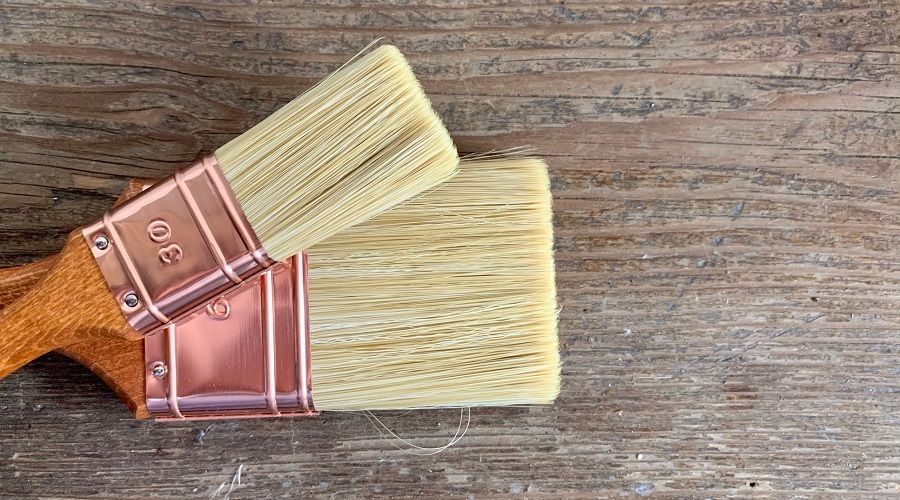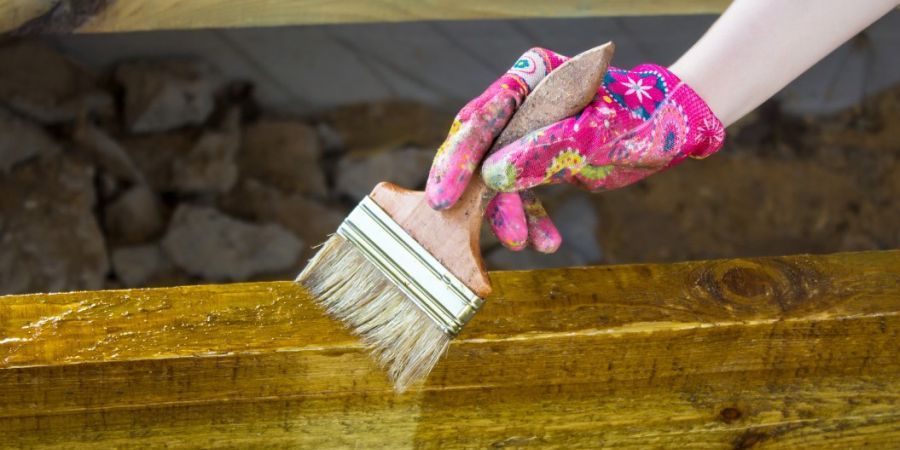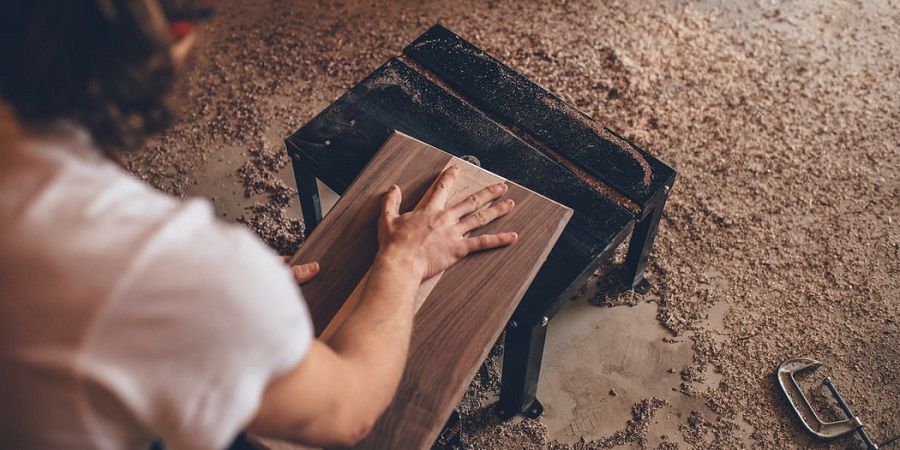A good stain can give your wood furnishings an unexplainable luxury that everyone wants, be it an outdoor deck or a simple candle holder. However, wood stains are tricky and one of the trickiest parts is choosing the right applicator for the job.
A brush can make or break a stain project and sadly, quality brushes are hard to find—but not impossible! If you're looking for the best brush for staining wood, you've come to the right place.
Backyard Boss Top 5 Brushes for Staining Wood in 2021
|
PRODUCT |
FEATURES |
||
|---|---|---|---|

|
|
||
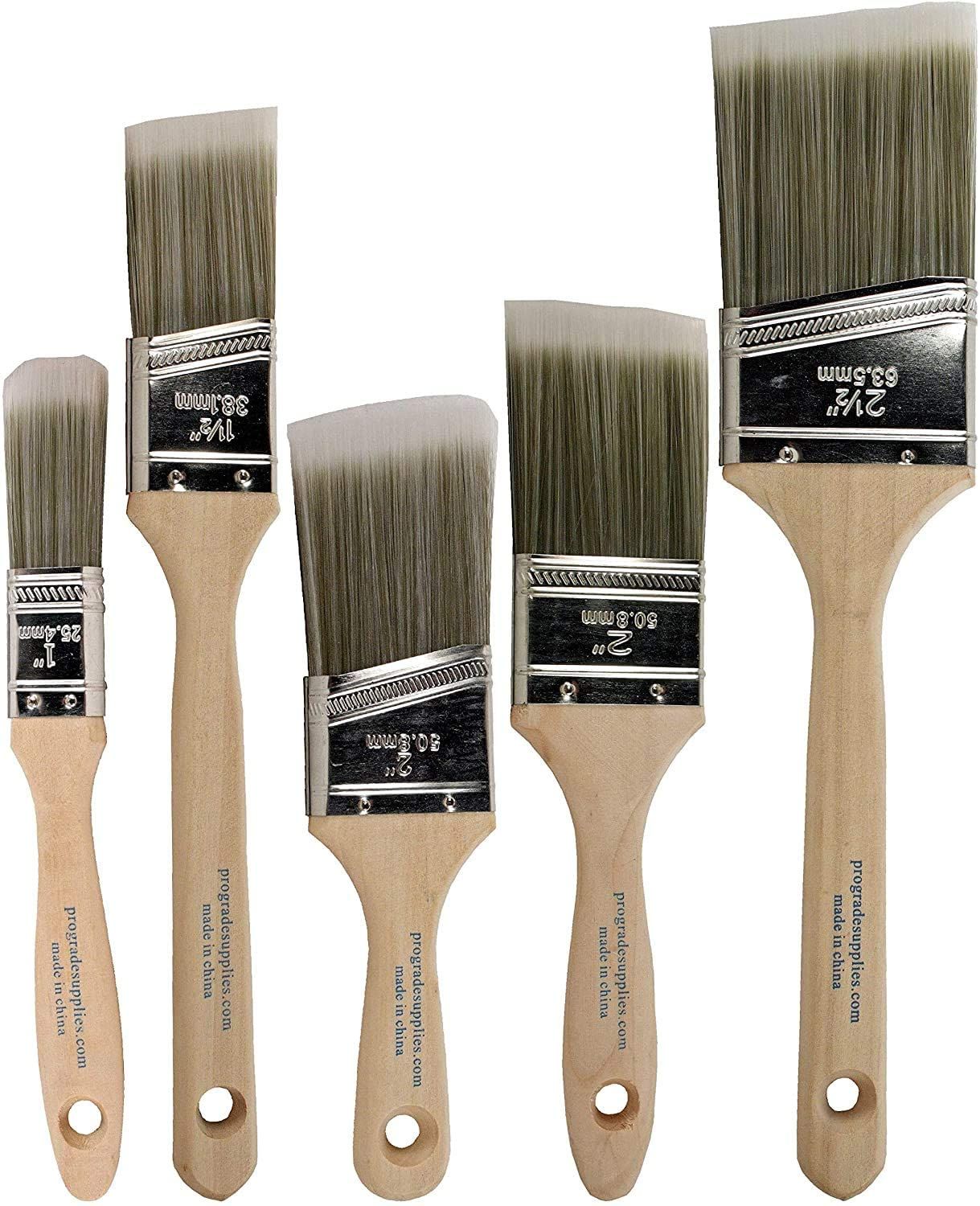
|
|
||
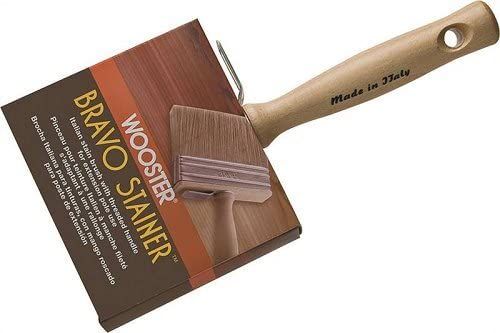
|
|
||

|
|
||
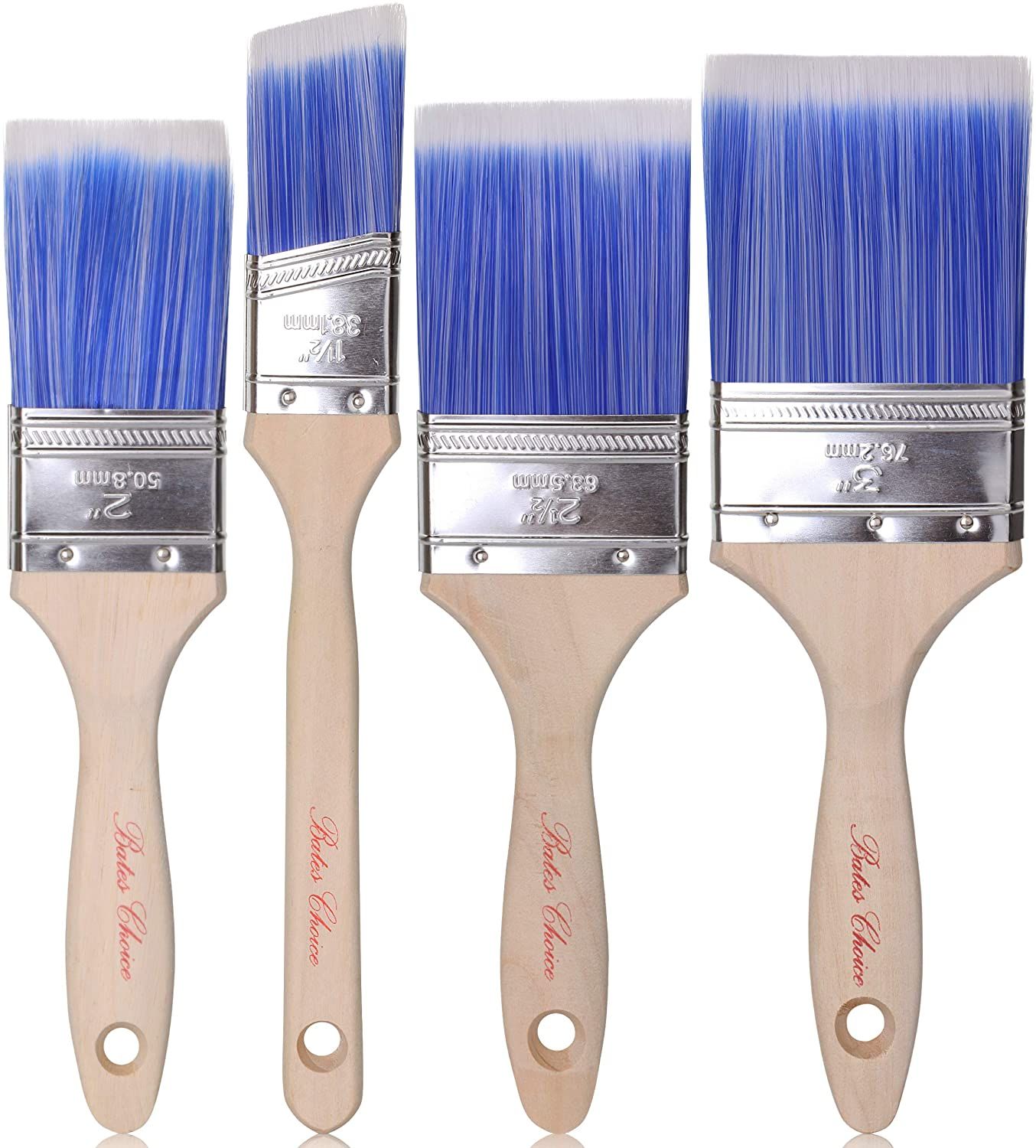
|
|
Why You Can Trust Us
We’re no strangers to wood projects. They seem simple enough but are a lot more complicated than anyone expects, especially when you're not using the right materials. Having gone through the struggle ourselves, we want to help you avoid any stress by introducing you to the best tools for your wood stain project.
Using personal experience and extensive research, we've made sure to include only top-quality brushes that have been tried and tested over the years. To help you know exactly what you're getting into, we made sure to list down the pros and cons of everything we found. We've also included bonus information that we would have found extremely helpful for our first few staining projects, all to help you make well-informed decisions on how to best approach your wood stain project.
Best for Water-Based Stains
This brush has polyester and nylon bristles, helping it pick up more product and lay down a very smooth and even stain.
- Smooth stains and finishes
- Stains large surface area
- Reusable cardboard cover
- Easy to clean
- Incompatible with any oil-based solution"
|
|
Why We Like It: The natural wood handle fits comfortably in your hands with a brush that immediately blends your strokes. It’s perfect for water-based solutions and is both low-maintenance and long-lasting. As long as you clean it properly and store it in its cardboard cover, this brush will last you a long time. This brush helps effortlessly lay down smooth coats of water-based stains and finishes and can be used for all kinds of projects.
Who Should Buy It: This is a great investment for people tackling statement wood pieces that don’t require much detail work. It's also great for those looking for a brush that they can simply use and clean without much stress in between.
Best Stain Paint Brush
These paint brushes come in a set of five, all in different brush tips, shapes, and sizes but with the same reliable bristle material.
- SRT filament blend for a smooth finish
- Variety of brush tips and shapes
- Good for a variety of projects
- Compatible with water-based and acrylic liquids
- Difficult customer service
- Shedding and bunching of bristles"
|
|
Why We Like It: These brushes are great for staining all kinds of wood projects, with a comfortable wood handle grip and brush tips that offer great control over how much stain is used. They use an SRT filament blend that's known to lessen streaks and hold more paint than normal synthetic brushes. They can be used for interior and exterior projects of all sizes and are designed with thin tips to control stain distribution.
Who Should Buy It: This would be great for anyone who plans on many wood staining projects and needs different kinds of brush tips to choose from.
Best for Oil-Based Paint
This natural bristle brush is designed for the smooth application of oil-based stains, finishes, sealers, and varnishes.
- Natural white China bristles
- Can be paired with a long-handle
- Covers a wide surface area
- Smooth finish
- Long handle is an added accessory
- Not good for small projects"
|
|
Why We Like It: This brush is great for big staining projects, covering large surfaces quicker without sacrificing the smoothness of a stain. It has a wide brush tip with white China bristles, great for leaving a smooth finish on big projects. Using this helps the stain get deep into the grain, regardless of wood texture. This is designed for staining decks easily, meaning you can also switch out the handle with an extension pole, if you choose to buy one.
Who Should Buy It: People who need to stain their decks or other big wood items would benefit the most from this kind of brush. Those looking for a brush that's durable, long-lasting, and made for oil-based solvents will want to get one for themselves.
Best for Furniture
This soft natural bristle brush is specially designed for marine wood, furniture, and detailed wood art.
- Angular trim for details
- Handmade brushes
- Durable and long-lasting
- Good for oil-based stains and finishes
- Bristles shed for first few uses
- No specific ratio of natural hair bristles
- Incompatible with latex bases"
|
|
Why We Like It: It has a wide angular brush tip that helps easily cover a lot of space and get into crevices and corners. Each brush is handmade to perfection, with the maker's signature on its handle. The packaging also doubles as a brush protector, helping it last longer in your hands. The natural ox hair and white China blend bristles also give it a smooth and glasslike finish, great for oil-based stains!
Who Should Buy It: Anyone looking to stain finer wood pieces would find much use with this brush, especially with detailed woodwork.
Best for a Smooth Finish
This brush set features four lightweight brushes that speed up long jobs. It uses thick synthetic filament bristles that hold more stain but are still easy to clean.
- Thick synthetic bristles
- Easy to clean
- Lightweight wood
- Holds and distributes more stain
- Bristles separate and shed
- Not good for detailed projects
- Small size"
|
|
Why We Like It: This incredibly versatile brush set makes it easy to quickly complete your projects, without sacrificing the quality of the final product. It’s also designed with comfortable wood handles, great for maneuvering detailed areas. It’s most compatible with water-based stains and paint but can still be used with diluted oil-based solvents. This is also good for fine lines and effortlessly leaves a smooth, professional finish.
Who Should Buy It: This is a great set for people who plan on using both water and oil-based stains and finishes for their wood stain projects without sacrificing the end result.
Types of Brushes for Staining Wood
Everyone has their own way of staining wood, from the materials they utilize to the methods they apply. If you don’t have a wood stain technique yet, start by finding the right tools for you! Stains can change, but the right brush is here to stay. To choose one, it’s important to know what you’re dealing with and how brushes interact with different wood stains.
Brushes can be classified in several ways but the most basic thing to know is whether the bristles are natural or synthetic.
Natural Bristle Brushes
Natural bristle brushes are better for oil-based wood stains and finishes. These bristles split and help keep the application smooth and even. However, natural bristles will swell and get damaged when used with anything water-based. Natural bristle brushes are also known to shed during the first couple of uses and should only be cleaned with mineral spirits or turpentine.
Synthetic Bristle Brushes
On the other hand, synthetic bristles are better equipped for water-based stains and finishes. Brushes with nylon bristles leave a smooth high-coverage stain while polyester bristles are better for details. You can find the best of both worlds with nylon/polyester blend brushes. While they only need warm soapy water for cleaning, they’re more difficult to maintain when using fast-drying solvents.
Other than the type of bristle, there are also brush sizes, shapes, and tips to consider but those all depend on personal preference and the kind of project. Luckily, these details are more flexible and aren’t an exact science.
How to Prevent Brush Marks or Strokes When Staining Wood
While staining wood sounds simple, it’s easy to mess up! Without the right technique, your projects can dry with visible brush marks or irregular stains. To prevent any mishaps, the key is to go quickly yet carefully. Before applying a stain, make sure you've properly prepared your wood and have mixed your wood stain with a stick to properly incorporate its pigments.
Image credits: Ian Schneider via Unsplash">Why Use a Brush Instead of a Rag to Stain Wood?
Another option for applying stain is to use a cloth rag instead of a brush. Each applicator has its strengths and benefits and while others may prefer a cloth, a brush might be better for your purpose. A rag is a more easily disposable item that helps cover an area quickly and smoothly but isn't too great with detailed projects.
On the other hand, brushes are great for detail work and crevices, being able to dig into tight spots better and offer more control on how the stain is applied. If speed is high on your priority list, a rag should work. However, if your project has many details and uses fine-grain wood, brushes would be better.
How We Picked
No one can deny that a bad brush leaves a bad stain. Sadly, with a market so saturated, it's difficult to find good brushes. With this in mind, we knew how important it was to find great brushes for your wood stain projects.
So how did we do it? We relied on careful and thorough research, looking through the consumer reviews of each item and seeing what worked and what didn't. We also made sure to choose brushes made of only the highest quality materials and bristles for durability and ease of use. Other factors we considered were its versatility, unique qualities, and how each brush would be cleaned and stored.
Luckily, we found five amazing brushes that are sure to make staining your wood projects so much easier.
Pick the Best Brush for Your Wood Staining Project
Our favorite brush for staining wood is the Minwax Manway polycrylic brush. The Minwax brush helps you paint a smooth and even stain quickly and without a fuss. It's also reusable, long-lasting, low-maintenance, and can be used with most DIY stain projects.
That said, if your wood projects are large, detailed, or will use an oil-based solution, a different brush would be more appropriate. Fortunately, it won't be difficult to find the right brush for you since we’ve already found the best ones for you!

